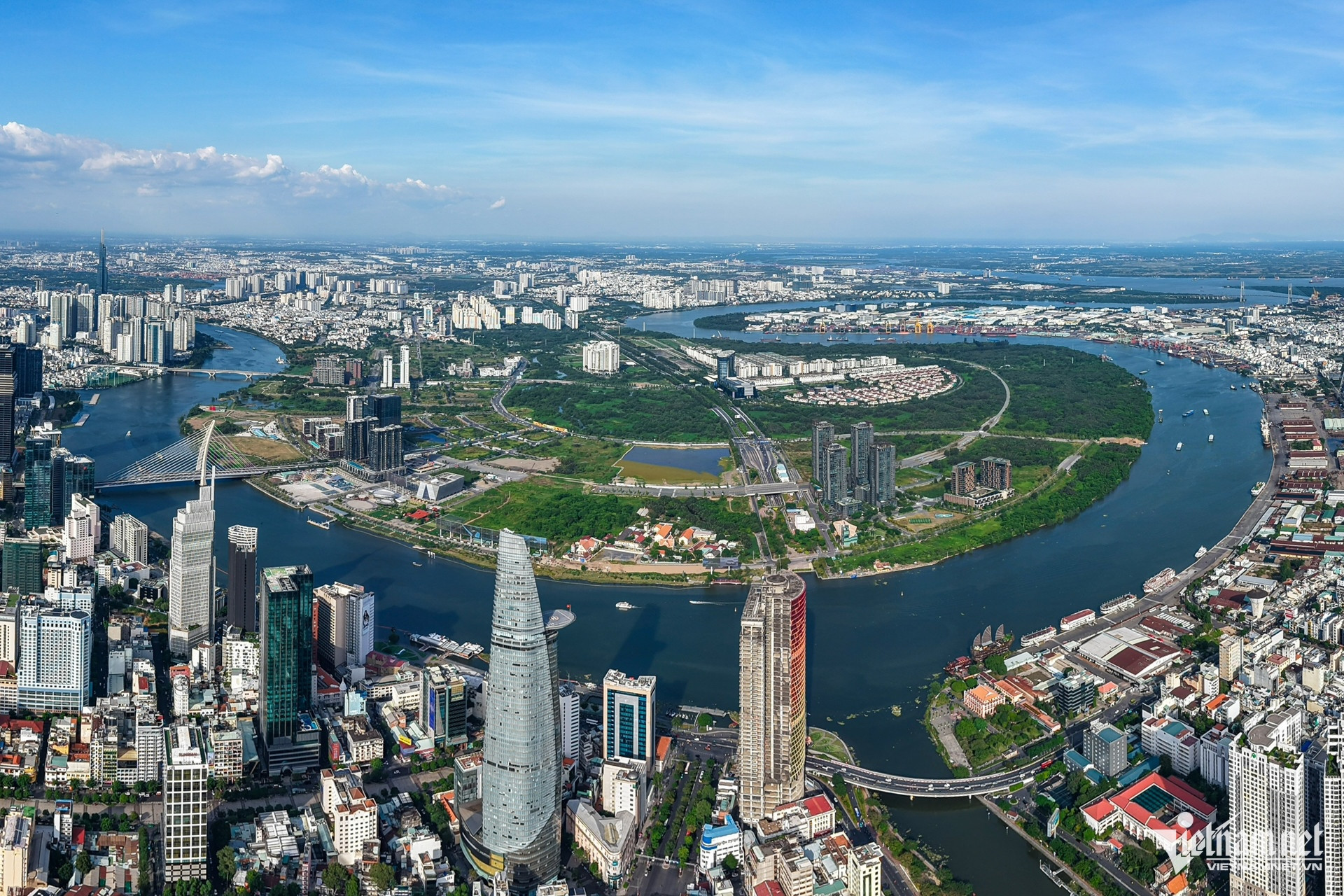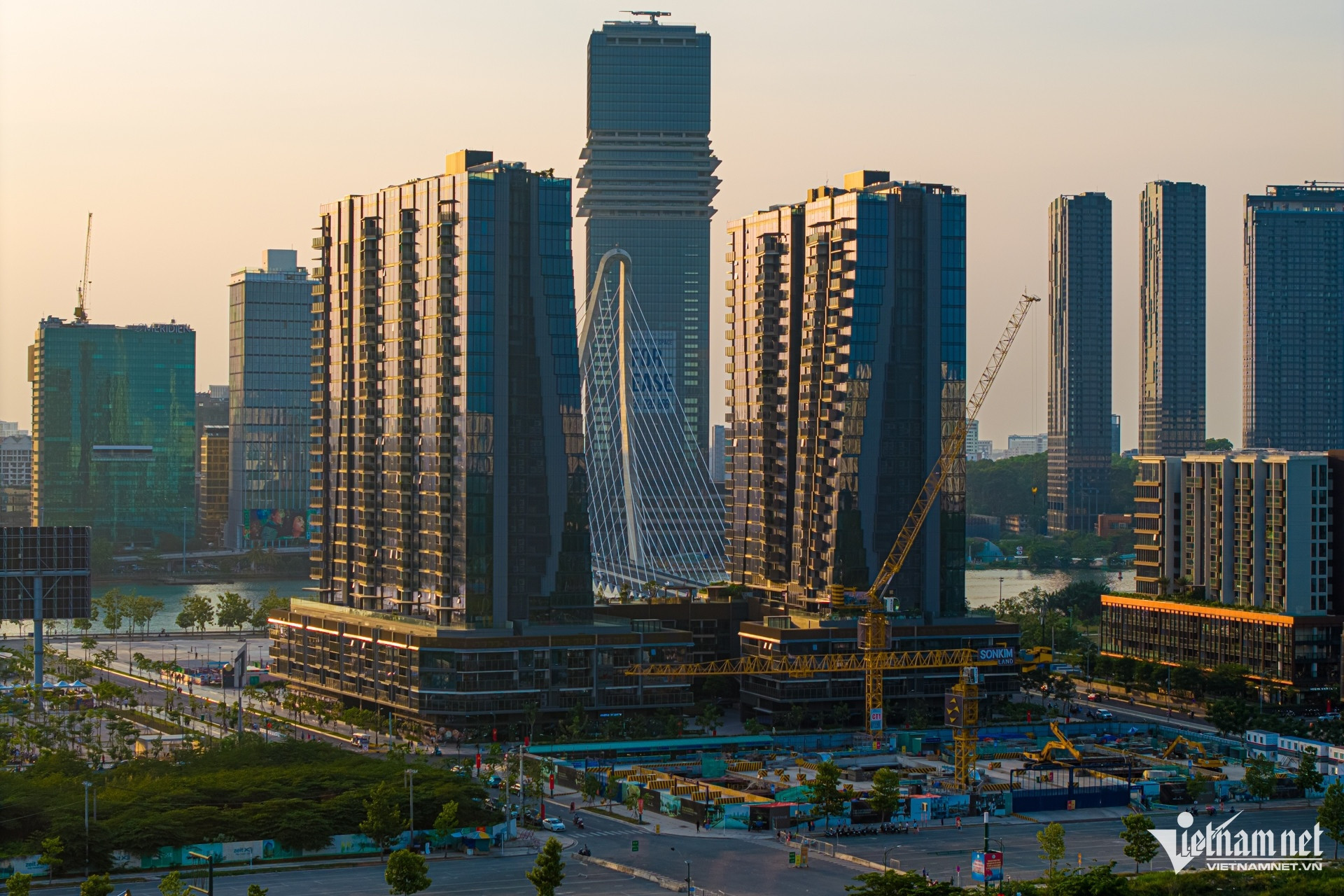Ho Chi Minh City is Vietnam’s first “mega city” as defined by the United Nations, meaning a metropolitan area with a population exceeding 10 million. However, to truly leap forward, this mega city still has much work to do.
The three-engine model

“I just met with a Taiwanese investment fund that’s very interested in industrial real estate in HCMC,” said Tran Thien Long, Vice Chairman of the Vietnam Industrial Real Estate Association (VIREA), after a meeting with foreign investors.
According to Long, such meetings have become increasingly frequent, especially since HCMC’s new administrative boundaries were officially announced. Foreign investors now view HCMC as a consolidated ecosystem combining three growth pillars: financial hub, industrial capital, and seaport services.
VIREA estimates that HCMC now has around 100 industrial zones (existing and newly planned). With abundant land, the city is poised to attract major domestic and foreign investment projects in the near future.
But the transformation is not just geographic or demographic. The merger of HCMC with the economic powerhouses of Binh Duong and Ba Ria - Vung Tau brings synergy in resources, infrastructure, industry structure, and development strategy.
Dr. Vu Thi Hong Nhung, a business lecturer at RMIT Vietnam, sees the new HCMC as a diversified economy with highly complementary sectors. The former HCMC remains the financial, tech, and e-commerce center, with the digital economy contributing up to 40% of its GRDP. Binh Duong holds the title of industrial capital, noted for manufacturing and attracting FDI. Meanwhile, Ba Ria - Vung Tau boasts the deep-water port system at Cai Mep - Thi Vai, a critical hub for logistics, oil and gas, and coastal tourism.
Combined, these regions form a “three-engine cluster” of industry - finance - logistics and tourism, enabling mutual development and delivering stronger momentum than when each operated independently.
“This model creates an interconnected chain of urban-industrial-port-service zones, similar to successful models in Shanghai, Singapore, and Bangkok,” Nhung noted.
Growth challenges

With a population of about 14 million, the new HCMC has officially become Vietnam’s first mega city. Based on 2024 data, Dr. Nhung estimates the city’s total merged GRDP exceeds VND 2.7 quadrillion (around USD 104 billion), with HCMC contributing VND 1.778 quadrillion, Binh Duong VND 0.52 quadrillion, and Ba Ria - Vung Tau VND 0.417 quadrillion.
However, despite this expansion, HCMC’s economy still trails some major cities in the region. For instance, its total GRDP is only about 47% of Jakarta’s USD 226 billion economy in 2024.
At the first post-merger socio-economic session, Nguyen Khac Hoang, head of the HCMC Statistics Office, outlined two major challenges for 2025.
First, inflation is high. Compared to the same period last year, agricultural production costs rose 13%, industrial production 5.37%, service production 10%, and transport fares over 22%. As a result, the Consumer Price Index (CPI) for HCMC rose 4.4% in the first half of the year. Rising CPI dampens purchasing power and production, which could impact economic growth for the remainder of 2025.
Second, for every 10 new businesses entering the market, 9 others exited, signaling deep issues in the city’s business environment.
Truong Minh Huy Vu, Director of the HCMC Institute for Development Studies (HIDS), emphasized the need to analyze the scale and sectors of these departing businesses.
In the short term, he suggested piloting a “green lane” mechanism for high-priority projects, whether public or private, allowing the city to concentrate resources and speed up project implementation.
“We need a program to streamline administrative procedures with a 'paperwork cutter' approach to clear the market bottlenecks,” Vu proposed.
While HCMC’s multi-core model offers strengths in industry, seaports, tourism, and finance, Dr. Phan Thanh Chung of RMIT Vietnam pointed out its biggest obstacle: the lack of a regional coordination mechanism.
Currently, HCMC, Binh Duong, and Ba Ria - Vung Tau each operate with separate management, budgets, and planning. Without reform, development will remain fragmented, internally competitive, and inefficient.
To maximize the potential of the new city, Chung said a robust and flexible regional coordination body is crucial. He cited models like Tokyo’s metropolitan government or London’s regional authority, which manage cross-provincial planning, budget allocation, public investment coordination, and shared administrative data.
HCMC also needs a unified regional master plan with clear development roles: Binh Duong for manufacturing and industry, Ba Ria - Vung Tau for logistics, ports, and tourism, and core HCMC as the center for finance, high-end services, and innovation.
At the same time, the city must fast-track development of its connectivity infrastructure, including highways, dedicated railways, and seaport logistics.
“HCMC will only succeed if the merger is accompanied by real regional integration, not just administrative expansion. Tailored incentives for each sub-region could also spark new growth,” the RMIT expert concluded.
Tran Chung